Milk Alternatives
May 25, 2011 –
As I have gone through my food journey, I had never intended to reduce my diary intake as much as I have. I was never much of a milk drinker, but I loved cheese. There was nothing that wasn’t made better with cheese. If I got a cheeseburger, give me 2 pieces of cheese. Lasagna? Throw on more cheese. Pizza? Extra Cheese.
However, as my journey continued I started experimenting without it. Instead of putting mozzarella cheese on my egg whites, I went with out it. Instead of milk in my protein shake, I went with water. Suddenly I noticed diary was out of my diet, with the exception of whey in my protein shakes.
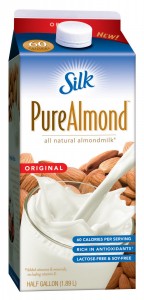 Back in December 2010, I started trying a bunch of new foods. I was looking to increase my carb intake so I started making Tony Horton’s Famous “Get Up and Go Granola.” (By the way, it’s fantastic!) So, I thought I would try some Almond Milk to go with it. I had never had it, but I love almonds. Wow! I was shocked. How could I have not tried this before? I liked it better than milk. I poured a cup in my homemade granola and I was in heaven.
Back in December 2010, I started trying a bunch of new foods. I was looking to increase my carb intake so I started making Tony Horton’s Famous “Get Up and Go Granola.” (By the way, it’s fantastic!) So, I thought I would try some Almond Milk to go with it. I had never had it, but I love almonds. Wow! I was shocked. How could I have not tried this before? I liked it better than milk. I poured a cup in my homemade granola and I was in heaven.
About a month ago, I tried an “Unsweetened” version which has less calories and carbs. I wanted to reduce both of these while I was doing the Asylum Challenge and the nutrition plan I had set out for myself. So I added it to my night-time protein shake and it was great. I couldn’t even tell the difference. However, if you taste it straight up you can definitely tell a difference. But when mixed in with something, I couldn’t distinguish between the two. Here is a quick comparison of Almond Milk vs. Skim Milk.
There is ALOT of debate about diary. ShaunT asks us to withhold diary from our diets in the Asylum Nutrition guide. Tony Horton doesn’t eat diary. Does that make it wrong? No! You need to decide what is best for you! I will ultimately have some diary, probably in the form of cheese and for a really special treat, ice cream. But 98% of the time, I really don’t have it. I have included (2) really good articles below to help you decide what is right for you.
The first is a great article by our go-to-man, Steve Edwards. He goes into a brief summary on both sides of the debate. The second article talks about the pros and cons of (5) alternatives to milk. I tried Soy Milk and thought it was okay. However, Almond Milk remains my favorite and what I will use going forward.
If I could make one suggestion. If you are starting out a new program, be very careful of the fat in dairy. As Steve says below, if you are eating / drinking dairy, choose low fat or no fat options.
The Down-Low on Dairy
By Steve Edward – 04/12/11
Milk: Does it really do a body good? Most of us are familiar with this advertising catchphrase. It’s also one of the most parodied slogans in history. A quick headline search reveals a slew of send-ups, ranging from sarcastically simple “Milk: It does a body bad” to the even more straightforward “MilkSucks.com.” Whether or not we should consume dairy products is one of the most common dietary issues in the news, yet there still doesn’t seem to be a definitive answer. Let’s take a look at the pros and cons of dairy and hopefully help you shed a little light on whether or not you want it as a part of your diet.
Conclusion
I didn’t accidentally paste the end of the article into the second paragraph; I just thought it would be best to get this out of the way right up front. Whether or not humans should consume dairy—specifically cow’s milk and all its byproducts—is, as you might surmise from the intro, a volatile issue. Opinions tend to be black or white and served up with heaping scoops of passion. But passion tends to come from emotion, not science, and a lot of dairy lore seems to be based on anecdotal conjecture rather than investigation and analysis.
This doesn’t mean that there’s no science involved in the debate—far from it. A search of the National Library of Medicine shows that more than 25,000 studies have been done on dairy, apparently none of which can give us any sort of consensus on its health effects in humans. What all these studies do show is that dairy products are neither going to kill us nor help us live forever. We can consume them and be healthy, but we also don’t need to consume them to be healthy.
Dairy can be a fine addition to one’s diet, but that doesn’t mean it’s right for your diet. You certainly don’t need as much as the National Dairy Council recommends, but dairy also needn’t be vilified more than any other type of food. As with most foods these days, there are issues, particularly when it comes to the way humankind seems compelled to continually “improve” them. But there are also individual considerations that should be assessed, and this article will address them.
The Bottom Line
 In keeping with our reordered approach to the dairy story, let’s look at the most simple aspect of dairy: its nutrient profile. Of course, this varies according to product, but most dairy-based foods are a good source of protein. Some, like yogurt and milk, have carbohydrates. And in their natural states, all dairy products contain fat and are great sources of enzymes. Most dairy products, especially those with the fat removed, would appear to be a fine source of nutrition.
In keeping with our reordered approach to the dairy story, let’s look at the most simple aspect of dairy: its nutrient profile. Of course, this varies according to product, but most dairy-based foods are a good source of protein. Some, like yogurt and milk, have carbohydrates. And in their natural states, all dairy products contain fat and are great sources of enzymes. Most dairy products, especially those with the fat removed, would appear to be a fine source of nutrition.
There is little reputable science to dispute that the dairy proteins casein and whey have excellent biological value profiles. Dairy fats are generally unhealthy, have high percentages of saturated fats, and should be limited in a healthy diet. But some dairy fats, mainly from certain cheeses, contain enzymes that make them a potentially beneficial part of a healthy diet, if consumed in moderation. Dairy’s carbohydrate source, lactose, has been the subject of a lot of scrutiny, but appears to be fine for most people, especially in its natural form. As we go on, we’ll examine the potential benefits and pitfalls of dairy consumption.
The Issues
Too much fat. As stated above, dairy products contain a lot of fat. Your diet should consist of around 20 to 35 percent fat, but very little of this should come from animal sources. The anti-dairy movement claims an association between consuming dairy and heart disease as a reason to steer clear, but it makes little sense to single out dairy as opposed to, say, meat—or pretty much anything you can buy at your corner 7-Eleven®. Most dairy products are available in low- or no-fat options where the fat is reduced or removed. Anyone for whom dairy products provide a major percentage of their daily calorie intake should definitely switch from full-fat to reduced-fat or nonfat dairy products. There are some concerns regarding protein-to-fat ratio and calcium utilization, though—read on.
Aren’t most of us lactose intolerant? Some people have problems digesting dairy products, which can lead to an unpleasant gastric condition usually referred to as lactose intolerance. The exact definition of lactose intolerance, as well as its specific details, remain under debate, but the condition appears to result from the pasteurization of dairy products, which kills the enzymes that aid the body’s digestion process. Milk and yogurt in raw form don’t seem to cause lactose intolerance. Regardless, the numbers here are skewed; anti-dairy pundits will often claim that the percentage of people who suffer from lactose intolerance is actually a majority of the population. Other studies seem to peg the number at closer to 20 percent. One constant is that those from cultures who have historically consumed a lot of dairy are not affected as much as those who aren’t.
 Lactose intolerance isn’t a dangerous condition, but it can cause considerable discomfort. If you do suffer from the condition, you might be interested to know that millions (if not billions) of people worldwide are perfectly healthy without consuming any dairy at all. Just be wary of replacing all the dairy in your diet with any other single food source, especially soy. Many dairy substitutes are soy based, and too much soy in your diet can be problematic.
Lactose intolerance isn’t a dangerous condition, but it can cause considerable discomfort. If you do suffer from the condition, you might be interested to know that millions (if not billions) of people worldwide are perfectly healthy without consuming any dairy at all. Just be wary of replacing all the dairy in your diet with any other single food source, especially soy. Many dairy substitutes are soy based, and too much soy in your diet can be problematic.
Does dairy cause a loss or gain of calcium? This is one of the more interesting controversies. The dairy industry champions itself as a leading provider of calcium. The anti-dairy folks say that exactly the opposite is true. Which (if either) is right?
The pro side is simple: They say dairy products contain a lot of calcium, and numerous studies show the importance of calcium in our diets. The con side is more complex. Some science suggests that the high protein-to-fat ratio of nonfat dairy sources, along with an abundance of vitamin A, somehow reduces the body’s ability to utilize calcium. This isn’t exactly confirmed by the said studies, which actually showed “no decrease in instances of osteoporosis.”
Does dairy cause osteoporosis? This is a fairly common claim cited by a wide variety of Internet sources. Most of these sources cite rather dated research, including a Harvard study published in the American Journal of Public Health way back in 1997, which claimed a correlation between female milk drinkers and hip fractures. However, newer research, such as a study in the April 2011 issue of the Journal of Bone and Mineral Research, found no connection at all between dairy consumption and hip fractures.
While neither study bodes well for the dairy lobby, it seems a bit odd to make any assumptions based on one dietary staple, considering that the largest piece of this puzzle is being left out altogether: exercise. In the last couple of decades, caloric increase across the U.S. has risen only around 3 percent, whereas the amount of exercise we get has dropped a whopping 20 to 25 percent. When you consider that the primary reason elderly people break their hips in routine falls is due to loss of muscle that protects the bones, it doesn’t take a MENSA member to suspect that lack of exercise might be a culprit.
 Dairy helps you burn body fat. From the flip side of weird science came a 2003 study out of the University of Tennessee that got a lot of publicity; it showed that those who consumed dairy products lost more body fat than those who supplemented with other types of calcium. But before you decide that yogurt should suffice for all of your calcium needs, consider that the study didn’t involve an even playing field. The subjects were on a reduced-calorie diet and the dairy group was given twice the amount of calcium the supplement group received. The study was funded by Yoplait®; feel free to draw your own conclusions.
Dairy helps you burn body fat. From the flip side of weird science came a 2003 study out of the University of Tennessee that got a lot of publicity; it showed that those who consumed dairy products lost more body fat than those who supplemented with other types of calcium. But before you decide that yogurt should suffice for all of your calcium needs, consider that the study didn’t involve an even playing field. The subjects were on a reduced-calorie diet and the dairy group was given twice the amount of calcium the supplement group received. The study was funded by Yoplait®; feel free to draw your own conclusions.
Regardless, two conclusions you could draw are that calcium is beneficial to your diet, and that you can use the type of calcium you get from dairy products to satisfy your body’s need for calcium.
Dairy causes cancer. Much of the concern over dairy and its potential to cause cancer comes from the book The China Study by T. Collin Campbell. In it, Campbell cites studies in which casein protein caused tumors in rats. While this is valid research, it needs to be taken with a grain of salt, given that humans and rodents have very different physiologies and these studies administered massive, concentrated amounts of the substance—far more than a human would ever consume in a day.
Dairy is filled with hormones. This is a major, well-documented issue involving how our nation’s dairy cows are raised. The FDA assures us that dairy farmers are only allowed to “dope” cows with safe drugs. Many people and organizations disagree with this statement. This is a subject that is too broad to cover adequately in one short article. It’s a debate that colors nearly every food-related decision most people make. It’s important to know that on the subject of dairy, we do have choices. We can choose organic options, or buy our dairy products from a local farm or someone we know.
 Which is better: raw or pasteurized? Nearly all pro-pasteurization literature comes from the National Dairy Council or U.S. regulatory agencies. On the other side, there’s a passel of independent information that cites the virtues of raw dairy products.
Which is better: raw or pasteurized? Nearly all pro-pasteurization literature comes from the National Dairy Council or U.S. regulatory agencies. On the other side, there’s a passel of independent information that cites the virtues of raw dairy products.
Dairy, in its raw form, is healthier (provided it comes from healthy cows). In fact, most raw-dairy advocates claim that lactose intolerance is a nonissue for consumers of raw dairy products because the lactose in these items is broken down by the enzyme lactase, which is killed during pasteurization process—a process raw dairy products don’t go through. Another issue is that cows aren’t always healthy. When cows are unhealthy, it’s common for deadly bacteria, including E. coli, to show up in the dairy products produced from their milk. Since pasteurization kills both bad and good bacteria while preserving much of the nutrient value, it’s championed as the better alternative by government agencies charged with safeguarding public health—and promoting dairy consumption.
Is organic better? Again, nearly all of the anti-organic literature comes from the National Dairy Council or U.S. regulatory agencies. This is, of course, because it’s their job to ensure us that all dairy is healthy and safe to begin with. And again, there are plenty of studies supporting organic as being preferable.
The verdict can again come down to some common sense. Organic standards require that cows live in better conditions and eat better food. We know that when we live better and eat healthier food, we are healthier. We can suppose that this is also true about cows. The next assumption would be that eating food produced by a healthier organism would be healthier. If this makes sense, it’s logical to conclude that organic is better.
 There are many healthy societies and cultures that don’t use dairy. This isn’t exactly true. Yes, there are many healthy people who don’t consume dairy, but dairy (when you include all animals, not just cows) has been consumed by most cultures since ancient times. The most commonly cited cultures that don’t consume dairy are in the East, mainly China, but historically, much of China was heavily dependent upon dairy. In fact, the northern regions and Mongolia have used yogurt as a nutritional mainstay for centuries.
There are many healthy societies and cultures that don’t use dairy. This isn’t exactly true. Yes, there are many healthy people who don’t consume dairy, but dairy (when you include all animals, not just cows) has been consumed by most cultures since ancient times. The most commonly cited cultures that don’t consume dairy are in the East, mainly China, but historically, much of China was heavily dependent upon dairy. In fact, the northern regions and Mongolia have used yogurt as a nutritional mainstay for centuries.
An analysis of the cultures that currently use little or no dairy yields mainly a list of poorer and less well-nourished cultures. And due to the socioeconomic climate of these regions, it seems unfair to cite lack of dairy as a reason for these cultures being malnourished. There are many examples of healthy, well-educated individuals who are perfectly healthy without dairy, and many decidedly healthy cultures, such as the Japanese, use much less dairy than those in Western Europe and the United States.
Sour on Milk? 5 Healthy Dairy Substitutes
By Jeanine Natale – 04/19/11
So you’ve made the decision to go dairy free for health, diet, and/or allergy reasons. Maybe you’re trying to avoid lactose. Maybe you just don’t like the way the dairy industry tends to treat cows. But here’s the rub: You love milk! So what are you going to do? Fear not, it’s easy to avoid lactose and still get your fill of milk-like liquids. Soy, rice, coconut, almond, and even hemp “milks” have all found their way into the diets, hearts, and grocers’ shelves of health-conscious people everywhere. Some, like coconut and rice milk, have been around for hundreds of years as dietary staples in many cultures around the world.
We’re going to take a look at the five most widely available—and very diverse—milk substitutes, but before we start, let’s quickly look at what you’re leaving behind when you give up dairy. A 1-cup serving of regular skim milk has 90 calories, 125 milligrams of sodium, 8 grams of protein, 30 percent of your recommended daily allowance* (RDA) of calcium, 25 percent of your RDA of vitamin D, phosphorus, and riboflavin, and 16 percent of your RDA for vitamin B12. That same cup of skim milk also contains 12 grams of carbohydrates, 11 of which are sugar.
Now let’s compare the rest. Keep in mind that these are all vegetarian/vegan-friendly, gluten-free alternatives.
- Soy Milk. Soy milk is probably the best-known milk alternative in the Western world. It’s easy to find it in a variety of flavors and options at just about any market. So how does soy milk stack up nutritionally compared to skim milk? A typical 1-cup serving has about 100 calories—slightly more than skim milk—with 7 grams of protein, 29 milligrams of sodium, 25 percent of your RDA of thiamin, 9 percent of your RDA of riboflavin, 8 percent of your RDA of iron, 15 percent of your RDA of copper, 20 percent of your RDA of manganese, and just about 35 percent of your RDA of calcium.Despite soy milk’s popularity, there is some controversy surrounding it. The trend toward foods that are or contain GMOs (genetically modified organisms) is currently a cause for great concern, and more than 90 percent of all soybeans sold in the U.S. are GMOs, making it pretty difficult to find truly natural, organic soybeans or soybean milk products.Also, unfermented soy products like soy milk naturally contain what are known as phytoestrogens—chemicals that when introduced to the human body tend to act like estrogen. There are many studies on this subject, but unfortunately most of them tend to contradict each other: Do phytoestrogens cause or prevent cancer? Are there negative side effects to ingesting too much of the stuff if you’re male? Should infants be given soy products at all? The best way to deal with the soy debate and its consequences, aside from doing a bunch of research yourself, is simply to remember the age-old adage, “All things in moderation.” If you aren’t going to be consuming gallons of soy milk per day, you should be just fine.Bottom Line: You might want to explore other choices before settling for this somewhat controversial and overprocessed milk alternative.
 Rice milk. If you’ve ever had the popular Mexican drink horchata, you’ve had rice milk. The popular commercial brands are enriched with calcium and other nutrients found in dairy milk, but they also (like commercial soy milk) have a variety of additives, sweeteners, and flavorings, many of which can’t be considered either organic or natural.So how does rice milk add up nutritionally? A 1-cup serving has approximately 80 to 90 calories, but they come mostly from sugar, which you probably already get plenty of, and which you’re probably trying to avoid if you’re trying to consume a healthy diet. If you’re a rice milk or horchata fan, great—you can mix it with all kinds of things to make it a fun, refreshing treat. But realistically speaking, rice milk doesn’t have much else going for it.Bottom Line: Although it’s relatively popular, I wouldn’t settle on rice milk as a truly complete and healthy alternative to regular milk, unless I was mixing it with Shakeology®. Store-bought brands will be more nutritious, but will contain a lot of sugar.
Rice milk. If you’ve ever had the popular Mexican drink horchata, you’ve had rice milk. The popular commercial brands are enriched with calcium and other nutrients found in dairy milk, but they also (like commercial soy milk) have a variety of additives, sweeteners, and flavorings, many of which can’t be considered either organic or natural.So how does rice milk add up nutritionally? A 1-cup serving has approximately 80 to 90 calories, but they come mostly from sugar, which you probably already get plenty of, and which you’re probably trying to avoid if you’re trying to consume a healthy diet. If you’re a rice milk or horchata fan, great—you can mix it with all kinds of things to make it a fun, refreshing treat. But realistically speaking, rice milk doesn’t have much else going for it.Bottom Line: Although it’s relatively popular, I wouldn’t settle on rice milk as a truly complete and healthy alternative to regular milk, unless I was mixing it with Shakeology®. Store-bought brands will be more nutritious, but will contain a lot of sugar.- Coconut milk. Thai food, anyone? How about a piña colada? If you’re a fan of either, chances are, you’ve had plenty of coconut milk in your lifetime. Now, don’t mistake coconut milk for the watery liquid found in the center of the coconut, which is known as coconut water (the stuff you hear sloshing around inside when you shake one). Rather, we’re talking about the rich, creamy stuff that’s extracted from the white coconut flesh nutmeat itself. Want to do it yourself at home? You’re looking at some pretty intensive labor.Until recently, a cup of coconut milk contained at least 500 calories, most of which was saturated fat, but now low-calorie coconut milk has begun finding its way onto grocers’ shelves. A typical 1-cup serving has about 150 calories, most of which is still saturated fat. It has 3 grams protein, 45 milligrams of sodium, 50 percent of the RDA of vitamin B12, 30 percent of the RDA of vitamin D, and 10 percent of the RDA of calcium and magnesium. If you’re a vegan looking to get more vitamin D in your diet, this stuff might help, but keep in mind that you won’t be getting any protein from it and you’ll be getting a lot of fat.Bottom Line: Regular coconut milk has traditionally been intended to be used in small amounts, mainly for cooking, not as a milk substitute for drinking a glass at a time. Although it’s delicious and has lots of healthful benefits, it’s way too rich to have as a drink by itself. And while light coconut milks may not pack the same caloric punch, they’re still essentially just fat.
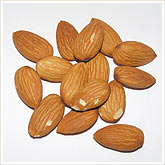 Almond milk. This is one I can live with. Nutritionally, a 1-cup serving will have anywhere from 50 to 80 calories, depending on how much water has been added. Although it has minimal protein, it does have 25 percent of the RDA of vitamin D, 50 percent of the RDA of vitamin E, and 150 milligrams of potassium, along with some manganese, selenium, and many other trace elements.There are a wide variety of fortified store-bought brands that all taste pretty darn good—sweetened, unflavored, or otherwise. Along with the more mainstream commercial brands, it’s also easy to find almond milk products that are raw and organic.Bottom Line: Almond milk is a personal favorite and quite versatile too, although keep in mind it’s still low in protein. On a side note, it’s fun to make from scratch. A 1-pound bag of raw almonds can get a little pricey at around $12.00, but the investment is worth it. Make your own—it’s delicious!
Almond milk. This is one I can live with. Nutritionally, a 1-cup serving will have anywhere from 50 to 80 calories, depending on how much water has been added. Although it has minimal protein, it does have 25 percent of the RDA of vitamin D, 50 percent of the RDA of vitamin E, and 150 milligrams of potassium, along with some manganese, selenium, and many other trace elements.There are a wide variety of fortified store-bought brands that all taste pretty darn good—sweetened, unflavored, or otherwise. Along with the more mainstream commercial brands, it’s also easy to find almond milk products that are raw and organic.Bottom Line: Almond milk is a personal favorite and quite versatile too, although keep in mind it’s still low in protein. On a side note, it’s fun to make from scratch. A 1-pound bag of raw almonds can get a little pricey at around $12.00, but the investment is worth it. Make your own—it’s delicious!- Hemp milk. Places like Trader Joe’s® or Whole Foods Market® are your best bet for hemp milk. There are a couple of different brands, again, all fortified and sweetened to taste more like regular milk. And no, it doesn’t get you high. Interestingly though, the U.S. is pretty much the only country in the world that doesn’t allow hempseed cultivation, even though there’s no drug content in it. All hempseed in the U.S. is from Canada; it’s guaranteed to be organic and pesticide-free.Hemp milk could be a real find. Hempseeds are pretty much considered a superfood, meaning that even in very small amounts, like an ounce or two, they pack a wallop nutritionally. A 1-cup serving of hemp milk has approximately 110 calories and has 24 percent of the RDA of iron, 72 percent of the RDA of magnesium and phosphorus, 35 percent of the RDA of zinc, plus 11 grams of omega-6 fatty acids, 4.5 grams of omega-3 fatty acids, and 16 grams of protein. Wow.Bottom Line: A milk alternative that’s naturally packed with nutrients. Definitely worth checking out.
If or when you decide to go with one or more of these alternatives to milk, also know that you can use them in most recipes just like regular milk. There are literally hundreds of recipes available free online, and dozens of well-informed cookbooks on the market. So experiment a little, and find out which milk substitute works best for you.
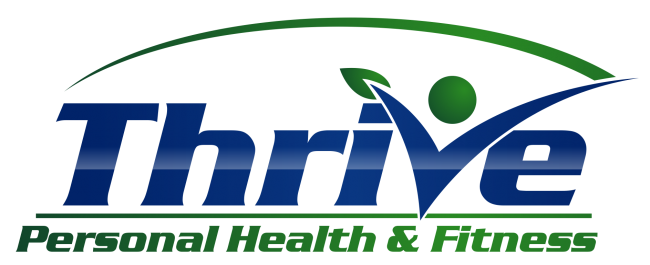





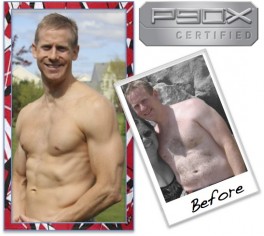


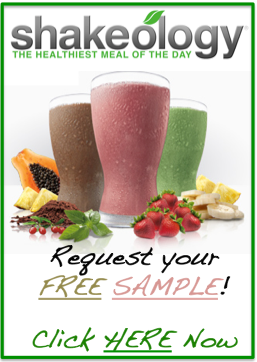





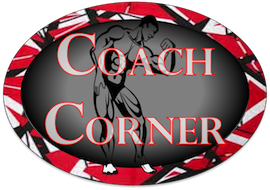







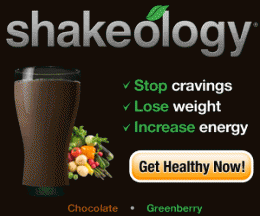


I have also greatly reduced my dairy intake since starting p90x, it seems to make a difference.
Michael- very well written post – I am just like you and I prefer almond milk – Mainly because I love almonds but it taste much better than skim or 1% milk hands do – and also much much healthier for you – Great Post !!
Coach Paul
“DO WORK”
Thanks man. I tried Coconut Milk recently as well. Tastes more watered down and was actually higher in calories. So I am still stuck on Almond Milk! I have pretty much eliminated dairy out of my diet, with the exception of Whey in my Protein.
Mike – Harris Teeter carries Unsweetened Coconut Milk that is only 50 cal per cup. 5 g of fat all saturated, but it is a good addition to your diet. Just a recommendation.
Thanks for the detailed write-up!
Thanks Vivek! I will need to give that a try!